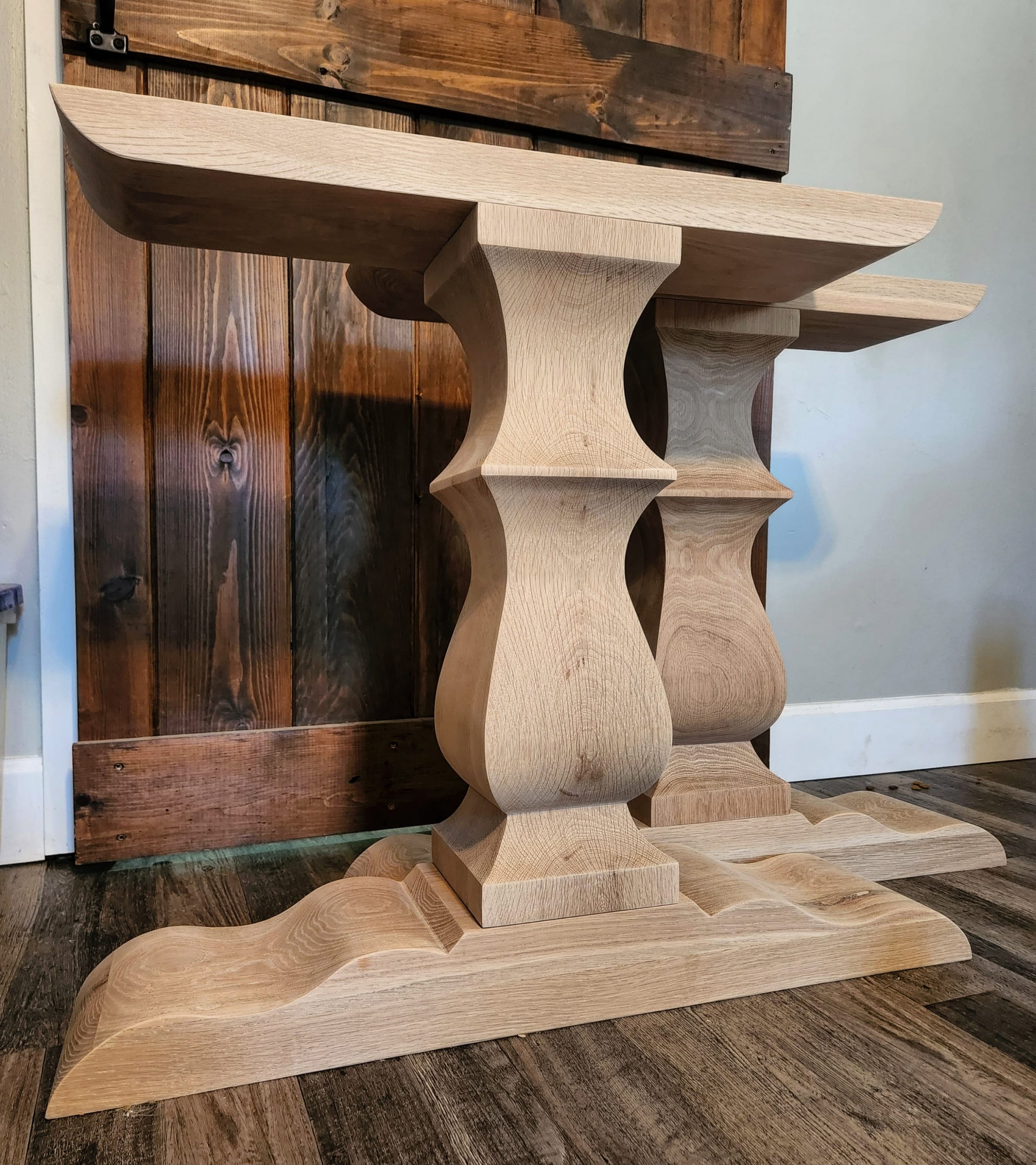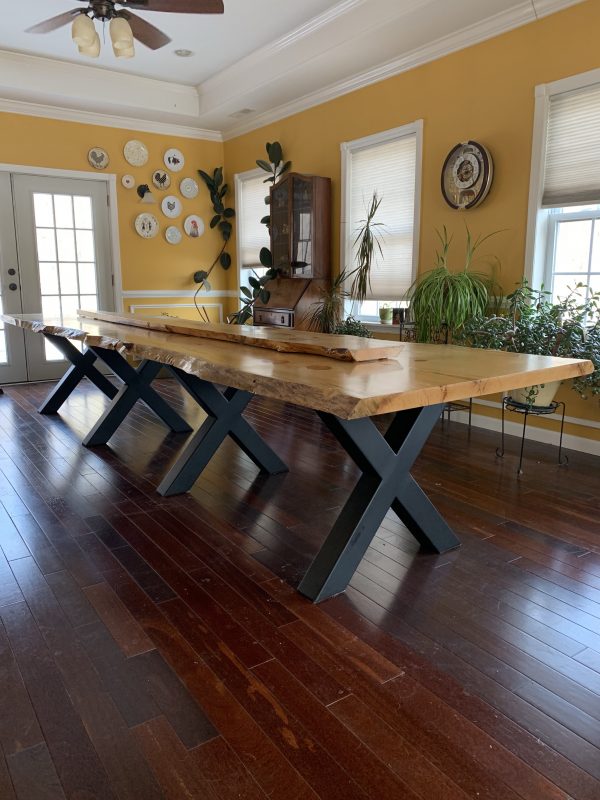From Traditional to Modern: Discover the Perfect Dining-room Table Legs for Your Style
While timeless layouts such as cabriole and turned legs stimulate a sense of timeless sophistication, contemporary designs like hairpin and geometric options provide an opportunity for striking visual interest. As you think about these components, the question stays: just how can you flawlessly integrate these varied leg designs to develop a harmonious dining experience?
Understanding Table Leg Styles
The selection of dining-room table leg designs can considerably affect both the appearances and functionality of the space. Each leg style contributes one-of-a-kind visual elements and sensible features, accommodating varied design preferences and use needs. Understanding these styles is critical for picking the ideal eating table that lines up with your total indoor design vision.
For circumstances, tapered legs offer a tidy, classic look that can improve a room's style, while pedestal bases supply stability and maximize legroom, making them suitable for smaller areas. Barrette legs, a trademark of mid-century modern style, present an industrial style, permitting a ventilated, open feel. Trestle legs stimulate rustic beauty, supplying robust support and a feeling of timelessness.
Wood legs can bring warmth and structure, whereas steel alternatives frequently convey a smooth, modern vibe. Inevitably, recognizing table leg designs is important for developing a natural eating area that reflects personal design while making sure practicality and comfort.
Typical Table Leg Options
When selecting eating room table legs, traditional choices commonly personify classic sophistication and workmanship. These designs show a rich heritage and a dedication to quality, making them ideal for those who appreciate classic aesthetic appeals.
Among the most famous typical leg styles is the cabriole leg, defined by its stylish bent shape. This design commonly features attractive makings and is most commonly located in Queen Anne and Chippendale furnishings. An additional preferred alternative is the transformed leg, which flaunts a series of smooth, rounded forms that give a timeless appearance while maintaining security.
In addition, the straight leg, while straightforward, uses a tough and basic framework that can mix perfectly with a selection of tabletop styles. For those drawn to ornate outlining, claw-and-ball feet legs stimulate a sense of magnificence and can act as a spectacular centerpiece in any kind of eating area.
Lastly, stand bases, although not purely legs, supply an alternate standard alternative that permits ample legroom and can be magnificently sculpted. Each of these traditional leg designs adds to the total ambiance of a dining-room, weding function with aesthetic charm.

Modern Table Leg Designs
Modern table leg styles use a varied variety of designs that highlight innovative materials and clean lines. These designs often prioritize performance while functioning as striking prime focus within a dining room. Minimal visual appeals are prevalent, with legs crafted from products such as steel, glass, and crafted wood, which add to a contemporary and ventilated feeling.
One popular design is the barrette leg, defined by its slender, conical framework that gives security without overwhelming the tabletop (dining room table legs). This style is commonly discovered in mid-century contemporary furnishings and can effortlessly enhance various eating table forms. Another trend is using geometric forms, where legs might take on unbalanced or angular forms, adding the original source aesthetic passion and a touch of artistry

Blending Styles for Distinct Areas
Often, house owners look for to create special dining areas that show their personal design by mixing different layout elements. This approach permits the incorporation of diverse aesthetic appeals, resulting in a harmonious yet distinctive atmosphere. Combining a rustic wooden table with sleek, contemporary steel legs can create a captivating comparison that boosts the room's overall charm.
Furthermore, integrating vintage table legs with modern tabletops can stimulate a sense of background while maintaining a modern sensibility. Such mixes not only display private taste yet additionally encourage creativity, permitting house owners to curate a room that feels both individual and inviting.
Color plays a crucial role in this blending process; choosing table legs that match or comparison with the existing color design can boost visual interest. For instance, whitewashed legs can soften the daring of a dark table surface, producing a balanced aesthetic.
Tips for Choosing the Right Legs
Picking the right table legs is necessary for achieving both capability and aesthetic charm in your eating room. Begin by thinking about the general style of your space. Conventional settings take advantage of legs that include detailed makings or transformed designs, while contemporary rooms might call for sleek, minimalist styles.
Next, assess the elevation and stability of the legs. dining room table legs. Standard dining tables vary between 28 to 30 inches in height, so guarantee the legs enhance this measurement for comfort. Furthermore, robust products, such as hardwood or metal, can enhance stability and longevity
Evaluate the leg form too-- alternatives consist of straight, tapered, or stand layouts. Straight legs supply a timeless look, while tapered legs can include a touch of sophistication. Pedestal bases give sufficient legroom and are ideal for smaller rooms.
Conclusion
In recap, selecting the ideal dining space table legs requires careful consideration of both typical and modern styles. By harmonizing leg design, height, and material with the overall design, a natural and welcoming atmosphere can be achieved.
The selection of eating room table leg designs can considerably affect both the appearances and performance of the room. Eventually, recognizing recommended you read table leg styles is essential for producing a natural dining location that reflects personal design while ensuring functionality and convenience.One of the most renowned standard leg designs is the cabriole leg, defined by its elegant curved shape. Straight legs use a classic look, while conical legs can include a touch of beauty.In recap, picking the excellent dining space table legs calls for mindful consideration of both modern and conventional designs.